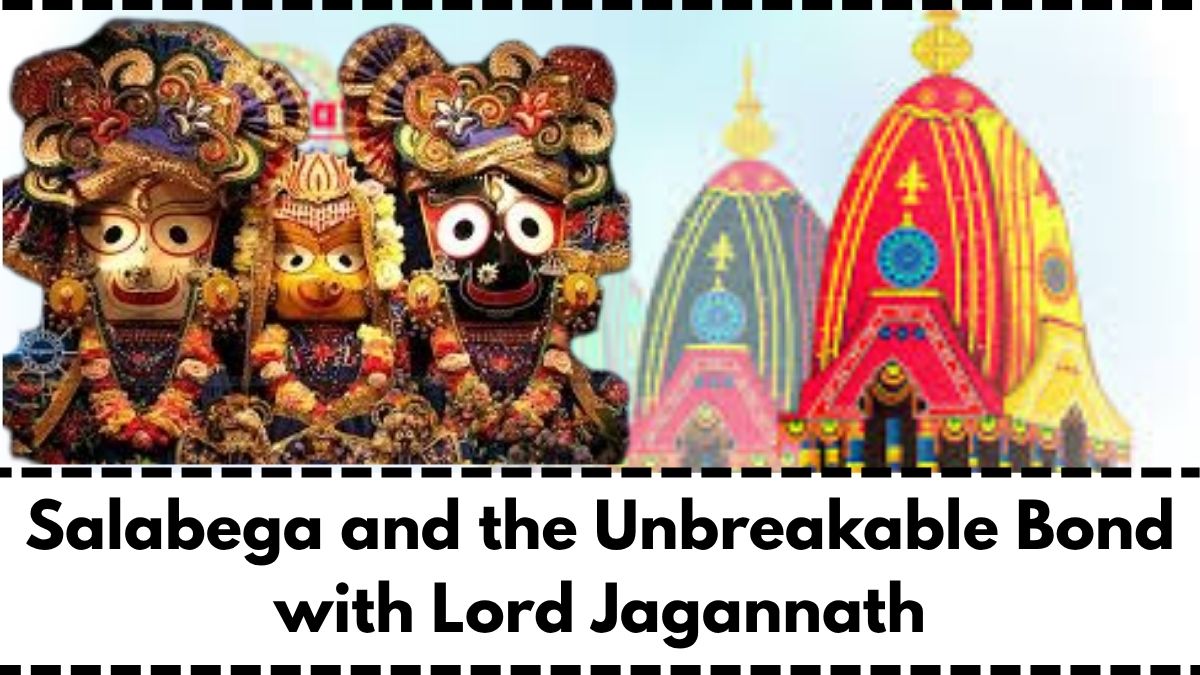When one thinks about the Jagannath Rath Yatra, an image of spiritual eagerness, faith, and devotion enters your mind. Amongst the numerous stories associated with this grand celebration is the amazing tale of Salabega, a Muslim fan whose steady love for Lord Jagannath transcended spiritual borders and left a lasting legacy that inspires generations to this day.

Who Was Salabega?
Salabega was a 17th-century poet and one of the most revered enthusiasts of Lord Jagannath. Born to a Mughal officer and a Hindu Brahmin female, Salabega was raised in a Muslim family.
The Turning Point in Salabega’s Life
Salabega’s improvement into a devout fan of Lord Jagannath stemmed from a near-fatal injury he suffered during a fight. On his mother’s recommendations, he shouted the holy names of Lord Krishna, which she covertly worshipped.
Unable to get in the temple in Puri due to his Muslim origins, Salabega selected to remain on Puri’s Grand Road and pour his dedication into literature. His emotional structures, including the renowned hymn Ahe Nila Saila, are masterpieces of bhakti poetry that resonate with millions of followers to this day.
The Miraculous Halt at the Rath Yatra
One of the most treasured legends surrounding Salabega revolves around the yearly Rath Yatra in Puri. According to the story, Salabega frantically desired to witness the Lord’s grand chariot procession.
Legend has it that the Nandighosha Rath, carrying Lord Jagannath, unbelievely halted simply outside Puri and would not move up until Salabega gotten here. The chariot resumed its procession just after Salabega captured a glimpse of the Lord.
The Shrine of Salabega on Grand Road
To celebrate Salabega’s amazing devotion, a shrine was put up on Puri’s Grand Road (Bada Danda), the exact same area where the Nandighosha Rath stopped briefly for him centuries earlier. This place has actually become a symbolic stop throughout the Rath Yatra, where the chariot sticks around each year, stimulating profound silence, reverence, and awe amongst enthusiasts.
Salabega’s Lasting Legacy
Salabega’s contributions go beyond his amazing connection with Lord Jagannath. His heartfelt bhajans, imbued with messages of faith, devotion, and universal love, continue to be sung in Jagannath temples and homes throughout Odisha. His works, primarily composed in Odia, not just show his personal yearning for the divine however also promote the inclusive essence of Lord Jagannath as The Lord of the Universe.
Salabega’s life is a powerful tip that spiritual devotion transcends religious and social divides. His commitment stays an eternal sign of unity, inclusiveness, and undeviating faith.
Lessons for Devotees Today
Salabega’s story carries lessons for all who stroll the path of faith:
Faith Has No Barriers: The life of Salabega reiterates that God does not discriminate based on faith, status, or caste. Pure dedication is the greatest qualification.
Determination in Difficult Times: Even in the face of challenges like health problem and exemption, Salabega’s steadfast faith assisted him, advising us of the power of perseverance.
Love as a Connection to Divine: Salabega’s legacy exhibits that deep love and yearning for the divine kind an ageless bond that goes beyond routines and conventions.
Keeping the Legacy Alive
Each year during the Rath Yatra, followers are advised of the powerful connection between Salabega and Lord Jagannath. From the solemn pause at his shrine on Grand Road to the voices singing his transcendent bhajans, Salabega’s story continues to inspire millions.
His life functions as a beacon for spiritual inclusiveness, beckoning individuals throughout all walks of life to find their location in the vast tapestry of commitment to Lord Jagannath.
Frequently Asked Questions (FAQs).
1. Who was Salabega?
Salabega was a 17th-century poet and ardent enthusiast of Lord Jagannath, renowned for his genuine structures regardless of being born to a Muslim dad and a Hindu mother.
2. What is the significance of Salabega in the Rath Yatra?
During the Rath Yatra, Lord Jagannath’s chariot makes a symbolic time out in front of Salabega’s shrine on Grand Road in Puri, honoring his undeviating dedication.
3. What are Salabega’s bhajans about?
Salabega’s bhajans often reveal yearning, commitment, and a deep sense of surrender to Lord Jagannath, making them ageless spiritual structures valued by fans.
4. How is Salabega remembered today?
Salabega is kept in mind as an icon of spiritual inclusiveness, whose life and works continue to inspire individuals across religious boundaries to seek universal devotion and unity.
5. Where can one discover Salabega’s shrine?
Salabega’s shrine is situated on Grand Road in Puri, Odisha, along the path of the Rath Yatra, enabling devotees to pay their aspects throughout the grand procession.
Salabega was a 17th-century poet and one of the most revered followers of Lord Jagannath. Salabega’s improvement into a devout fan of Lord Jagannath stemmed from a near-fatal injury he suffered throughout a fight. According to the story, Salabega desperately wanted to witness the Lord’s grand chariot procession. Legend has it that the Nandighosha Rath, bring Lord Jagannath, miraculously stopped simply outside Puri and would not move up until Salabega arrived. Salabega’s contributions go beyond his amazing connection with Lord Jagannath.
For More Information Click Here